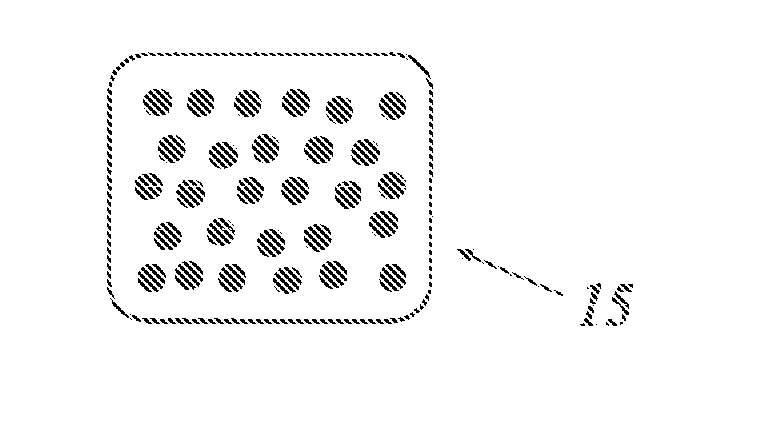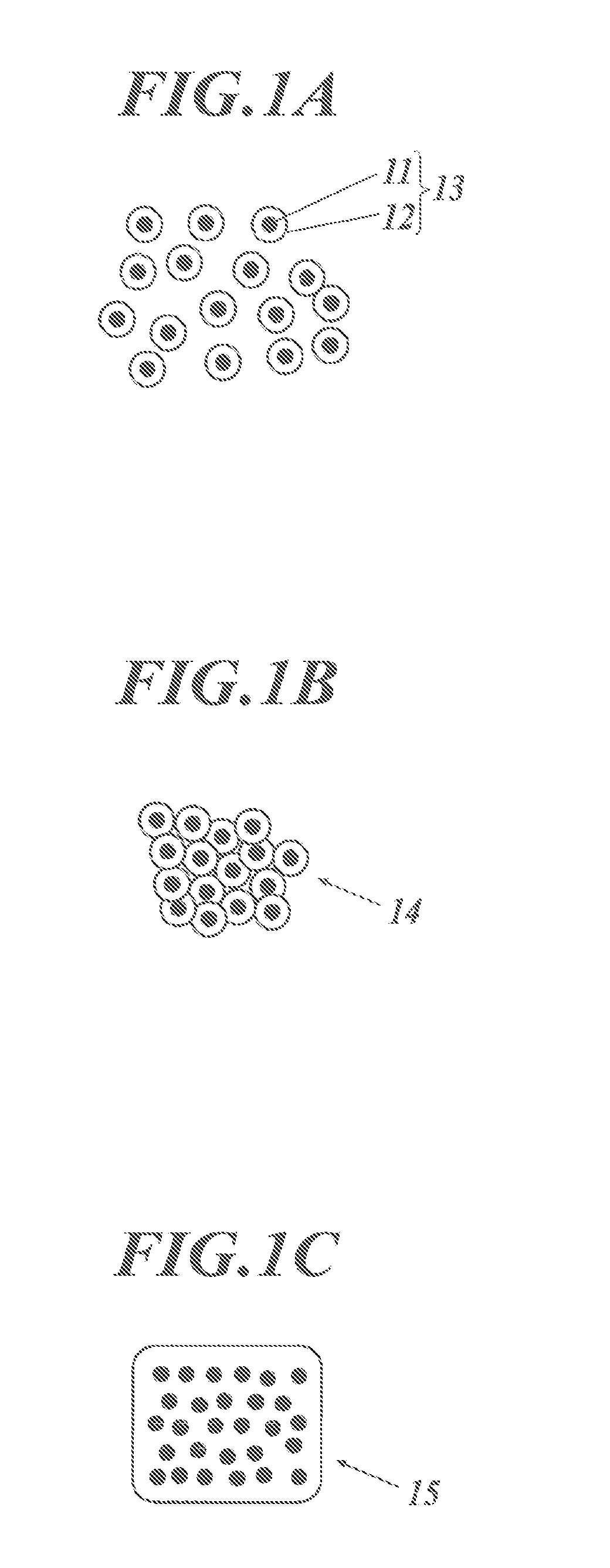Manufacturing method of organic-inorganic composite material and optical material
- Summary
- Abstract
- Description
- Claims
- Application Information
AI Technical Summary
Benefits of technology
Problems solved by technology
Method used
Image
Examples
embodiment example
[0131]Hereinbelow, specific examples of the present invention will be described. However, they are not limitative in any way.
embodiment example 1
Organic-Inorganic Composite Material Manufacturing Example 1
(1) Hydrophobization Treatment of Inorganic Fine Particles
[0132]To 25 g of alumina nanoparticles (particle diameter is 10 nm), 500 mL pyridine was added and dispersed for two hours by the Ultra Apex Mill. Then, 100 g of trimethylsilyl chloride was dropped, in the form of droplets, in to the above obtained dispersed liquid over the duration of one hour while being stirred, and further stirred for one more hour. Thereafter, particles were separated by centrifugation, and 100 mL of ethanol, was added to the particles to clean them by repeating the stirring and separation by centrifugation for four times. The obtained particles were dried over one night at the temperature of 100 degrees to obtain alumina nanoparticles [A-1] whose surfaces are now hydrophobic through the hydrophobization treatment using a trimethylsilyl group.
(2) Preparation of Composite Particle Latex where the Composite Particles are Made by Inorganic Fine Par...
embodiment example 2
Organic-Inorganic Composite Material Manufacturing Example 2
[0136](1) Preparation of Composite Particle Latex where the Composite Particles are Made by Inorganic Fine Particles being Coated with a Resin
[0137]In a liquid of 200 g of zirconia-sol water dispersed liquid (particle diameter is 15 nm, solid content is 20%) and 300 g of pure water, 3.0 g of the reactive nonionic surfactant “Adekariasoap NE-10” (available from ADEKA Corporation) was added under stirring and under a nitrogen gas stream at the room temperature. Then, as a polymirizable monomer for forming resin, 5% by mass of the monomer mixture of 40 g of butylacrylate, 140 g of isobonyl methacrylate and 20 g of methacrylic acid was dropped therein, in the form of droplets, over the duration of 10 minutes and then, the mixture liquid was heated to 70 degrees and 100 g of 10% aqueous solution of the anionic surfactant “EMULGEN E-27C” (available from Kao Corporation) and 0.6 g of potassium persuphate as a polymerization cataly...
PUM
| Property | Measurement | Unit |
|---|---|---|
| Particle diameter | aaaaa | aaaaa |
| Particle diameter | aaaaa | aaaaa |
| Temperature | aaaaa | aaaaa |
Abstract
Description
Claims
Application Information
 Login to View More
Login to View More - R&D
- Intellectual Property
- Life Sciences
- Materials
- Tech Scout
- Unparalleled Data Quality
- Higher Quality Content
- 60% Fewer Hallucinations
Browse by: Latest US Patents, China's latest patents, Technical Efficacy Thesaurus, Application Domain, Technology Topic, Popular Technical Reports.
© 2025 PatSnap. All rights reserved.Legal|Privacy policy|Modern Slavery Act Transparency Statement|Sitemap|About US| Contact US: help@patsnap.com


